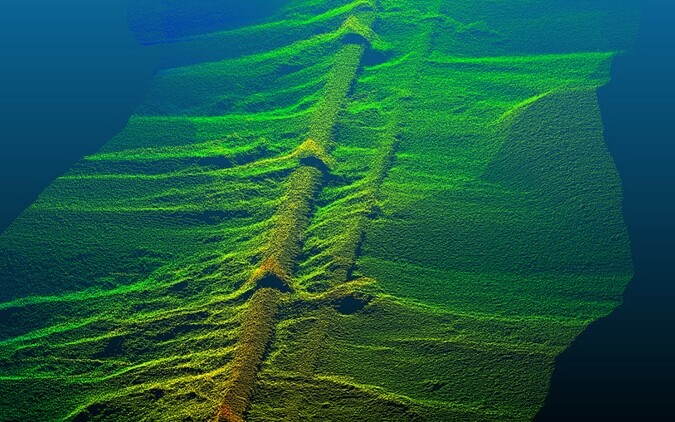Kongsberg Discovery today released a statement highlighting the company’s most recent project, which used advanced hydroacoustics to inspect the Lower Harbor Ore Dock at Marquette on Lake Superior.
Survey attendees included U.S. Army Corps Detroit District, U.S. Border Patrol, Krech Ojard Engineering, Schnabel Engineering, Lundin Mining, Carmeuse Mining, AMI Engineers, and U.S. Geologic Survey to see how Kongsberg’s latest hydroacoustics could deliver rapid, high-resolution imaging of structural integrity, the statement read.
Jessica Daignault, professional civil engineer with Kongsberg Discovery said, “Long-term exposure to the forces of water and weather take their toll. Add in decades of large vessel operations and you have a recipe for undermining structural integrity. The iconic Lower Harbor Ore Dock retains its strength and beauty above the waterline, but we also wanted to make sure it was equally as robust below the water surface.
“It’s the kind of infrastructure inspection that can be challenging when using traditional methods, such as dive teams, but can be conducted efficiently and safely with modern hydroacoustic solutions. Our technology gave a powerful demonstration of that ability, revealing the dock as it’s never been seen before.”
Kongsberg Discovery used two of its sonars, the M3 Sonar HF multibeam sonar and the 1171 Hi-Res Scanning singlebeam sonar, to scan the vertical wall structure. SoundTiles, an IQUA Robotics software, was used to process the multibeam data for rapid mosaicking. The high resolution 1171 single-beam sonar was then deployed to create a powerful real time visualization of the walls, diving into detail across the timber pole piles and concrete foundations for imaging.
“The entire group of stakeholders we invited were able to enjoy a beautiful day on the water while learning about new technology,” noted Daignault. “The images were distortion free and of excellent resolution, giving a crystal-clear view of the structure and allowing everyone to appreciate the durable quality of this unique engineering project.
An example of the M3 Sonar HF multibeam sonar can be viewed in the video below.





